Osseointegration - A New Connection
Author: Max Warfield
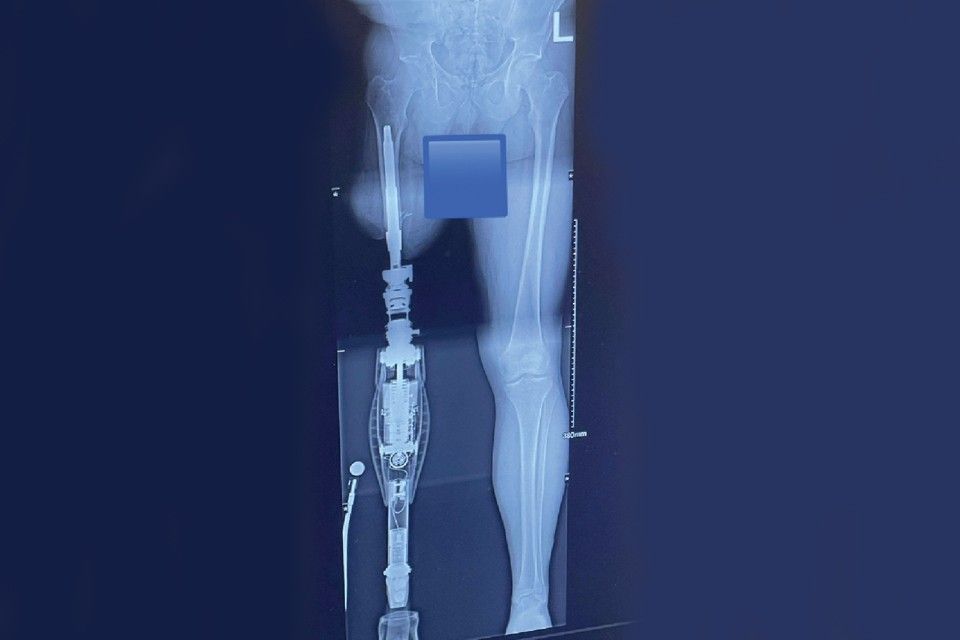
In 2023, Pierre Desjardins was on the other side of chemotherapy and doing well yet still struggling with his prosthetic leg. That's when he joined an amputee group on Facebook and heard about osseointegration, an advanced reconstructive surgery technique for amputees.
In 2019, Pierre Desjardins was a 23-year-old registered veterinary technician in Sudbury, Ontario. He was going through battles with his health hitting one wall after another, making for some tough decisions. He was diagnosed with osteosarcoma. His cancer grew into a sizable tumour in his leg. He believed that he was getting a knee replacement, which escalated to an above-knee amputation. The next couple of years were filled with multiple socket trials (sub-ischial, Hi-Fi socket, ischial containment) without true comfort. Then doctors discovered a spot on his lung, followed by chemotherapy and terrible side-effects. Life was bleak.
In 2023, Pierre is living in London, Ontario. He went back to school and was working in Human Resources. He was on the other side of chemotherapy, a veteran of many surgeries and doing much better, yet still struggling with his leg.
“I had a traditional prosthetic socket,” Pierre tells, “tried different types, but for my level of activity it just was not working. It was a lot of sweating, lots of chaffing, lots of blisters, even a bloody groin. I was not where I wanted to be with activity – you know, veterinary work, hiking and camping, the gym, stuff people in their twenties would be doing. I was told, ‘If you are in pain, take it off and take two or three days without your leg.’ Well, that just wasn’t feasible for me. I had things I needed to get done. That had gone on for about four years.”
Pierre wondered if there were any new options that would be a fit for him. “Healthcare choices can be intimidating,” he admits. “I joined amputee groups on Facebook, amputee this and amputee that, and you hear stories.” That’s how he heard about osseointegration.
The term ‘osseointegration’ was coined in the 1950s by Swedish professor Per-Invar Brånemark when he researched the capacity to integrate human bone with titanium metal. Its origins were in dental implants and the pioneering work of the University of Toronto’s dentistry professor George Zarb who trained under Brånemark in the 1980s.
Osseointegration is now an advanced reconstructive surgery technique for amputees. The implant connects directly with the bone of the residual limb for the purpose of better body awareness and superior balance and gait. The procedure inserts a titanium implant into the marrow space of the bone. The rod becomes integrated over time to become part of the bone. The other end of the implant extends through the soft tissue for direct attachment to the prosthetic device.
Osseointegration is said to offer recipients improved function and mobility without pinching, sweating, muscle weakness and skin irritation. Osseo bone-anchored prostheses can be implanted in the humerus (upper arm bone), radius or ulna (forearm bones), femur (thigh bone), or tibia (lower leg bone).
“My then-girlfriend, now wife, is an RN [Registered Nurse] and she started the osseo research for me,” Pierre continues. “I learned about Dr. Robert Turcotte in Montreal. I spoke with my prosthetist, asking about the steps to explore if this was an option for me and if it was covered by OHIP? Had it not been covered, I would not have followed through with it.”
Pierre’s prosthetist connected him with Dr. Dudek in Ottawa who was overseeing the osseo program that was emerging in Ontario for amputees. Dr. Dudek deemed that Pierre was a candidate. The program would begin the following year and Pierre was put on the list. “That’s when the ball really got rolling,” he remembers. “I wanted this, even if it meant that I’d be one of the first ones. I was done in 2024.”
In 2023, Pierre is living in London, Ontario. He went back to school and was working in Human Resources. He was on the other side of chemotherapy, a veteran of many surgeries and doing much better, yet still struggling with his leg.
“I had a traditional prosthetic socket,” Pierre tells, “tried different types, but for my level of activity it just was not working. It was a lot of sweating, lots of chaffing, lots of blisters, even a bloody groin. I was not where I wanted to be with activity – you know, veterinary work, hiking and camping, the gym, stuff people in their twenties would be doing. I was told, ‘If you are in pain, take it off and take two or three days without your leg.’ Well, that just wasn’t feasible for me. I had things I needed to get done. That had gone on for about four years.”
Pierre wondered if there were any new options that would be a fit for him. “Healthcare choices can be intimidating,” he admits. “I joined amputee groups on Facebook, amputee this and amputee that, and you hear stories.” That’s how he heard about osseointegration.
The term ‘osseointegration’ was coined in the 1950s by Swedish professor Per-Invar Brånemark when he researched the capacity to integrate human bone with titanium metal. Its origins were in dental implants and the pioneering work of the University of Toronto’s dentistry professor George Zarb who trained under Brånemark in the 1980s.
Osseointegration is now an advanced reconstructive surgery technique for amputees. The implant connects directly with the bone of the residual limb for the purpose of better body awareness and superior balance and gait. The procedure inserts a titanium implant into the marrow space of the bone. The rod becomes integrated over time to become part of the bone. The other end of the implant extends through the soft tissue for direct attachment to the prosthetic device.
Osseointegration is said to offer recipients improved function and mobility without pinching, sweating, muscle weakness and skin irritation. Osseo bone-anchored prostheses can be implanted in the humerus (upper arm bone), radius or ulna (forearm bones), femur (thigh bone), or tibia (lower leg bone).
“My then-girlfriend, now wife, is an RN [Registered Nurse] and she started the osseo research for me,” Pierre continues. “I learned about Dr. Robert Turcotte in Montreal. I spoke with my prosthetist, asking about the steps to explore if this was an option for me and if it was covered by OHIP? Had it not been covered, I would not have followed through with it.”
Pierre’s prosthetist connected him with Dr. Dudek in Ottawa who was overseeing the osseo program that was emerging in Ontario for amputees. Dr. Dudek deemed that Pierre was a candidate. The program would begin the following year and Pierre was put on the list. “That’s when the ball really got rolling,” he remembers. “I wanted this, even if it meant that I’d be one of the first ones. I was done in 2024.”
Kirsten Woodend, PhD, emeritus professor of nursing at Trent University, flew to Australia for the implant in 2018, choosing to travel where osseointegration procedures were available at that time.
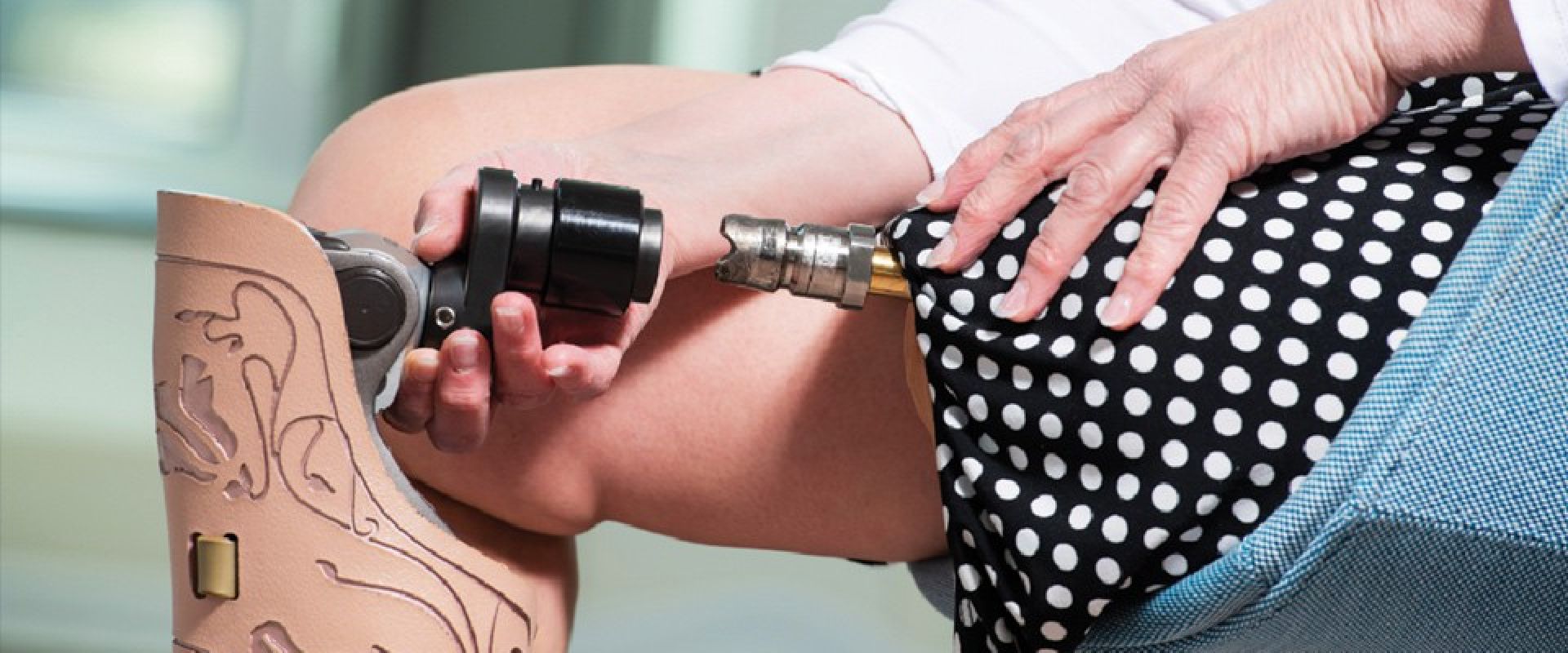
“I had a bad fracture that was not healing,” shares Dr. Woodend. “I was weighing osseointegration against having a higher amputation, and osseo was the better choice. It gives my limb a longer length, which helps too.”
Presently, Dr. Woodend is sourcing funding to research aspects of medicine that include making difficult healthcare decisions, and osseointegration self-management.
“We would like to develop an improved Patient Decision Aid that is scientifically based,” Dr. Woodend explains. “What we need to do is partner with people who have had osseointegration and find out what they learned and where they got their information and what it is that they would have liked to know. Then they won’t have to rely on social media and learn all sorts of weird things; they will have an evidence-based decision tool to work their way through that decision. I am a medical researcher, and I don’t know how the average person without that privilege does it.”
Those who have made the difficult decision in favour of osseointegration list benefits like better function (particularly for those with a short residual limb), restoring a sense of freedom and confidence (distant parking spaces and nighttime trips to the bathroom), improved comfort (sitting on a chair or toilet), pain-free long walks (increased daily step counts by 50-80%), better agility on uneven ground, a decrease in phantom pain, improved bone density, improved body alignment (less back pain from standing for long periods), no socket-related issues, increased strength, and better range of motion.
There are drawbacks too. Osseointegration can be cost prohibitive. There are rejection and infection risks – to the bone and the residual limb. There is a lifelong commitment to a twice-daily maintenance regimen of cleansing. Bacteria-filled environments like lakes and pools are off-limits. A periprosthetic fracture can occur around the implant. And there is a limit with respect to some forms of physical activity. The drawbacks are real but not unacceptably frequent or insurmountable.
Dr. Woodend, a Peterborough resident, reports that she got a bone infection after her osseo procedure in Australia and had follow-up visits with Dr. Turcotte and Dr. Dudek in Montreal and Ottawa respectively.
“Even though I have a chronic bone infection as a result of osseo, mine is still a happy story,” she notes. “I start my morning with a good long walk — could not have done that without osseointegration. It is just wonderful to get out for a long walk; it helps me mentally, too. I’m out with my horses getting hay out of the barn, cleaning stalls, doing all of those things. I’ve been up to 14,000 steps in a day since my hip replacement, which was the opposite leg. I average 10,000 or so a day. I spend a lot of time at my desk, so I have to make a concerted effort! This says a lot about osseointegration - that I’m able to maintain this level of activity at my age,” chuckles the septuagenarian.
She deliberated on the bone fracture issue but was confident in her decision. “There are a lot of fail-safes with it,” she says. “For instance, I have a rotation adapter in my ankle that will rotate first. There are bushings with pins which will break if there is too much rotation. Another level of safety comes with a cone inside the implant that connects to the bushings that connects to the prosthesis and another two pins which will break if rotated too far. There are at least three levels of fail-safe that will prevent that rotational fracture.
“I’ve found that superficial infections are almost inevitable,” Dr. Woodend continues. “I treat mine with antibiotics. There are challenges. But do I regret my decision? Not for a moment! Now I don’t have to work through a socket to create movement. With osseo, your energy is more directly applied. Also, if you look at how the femur is aligned with the socket, it is more in line with your other leg. Before osseo, my leg had become very small. My muscle was small, but now my leg is every bit of the other. With osseointegration, I had the chance to develop the muscle. Sitting is easier. When I had a socket, people would get used to me standing behind my chair during meetings because it was so uncomfortable.”
“We would like to develop an improved Patient Decision Aid that is scientifically based,” Dr. Woodend explains. “What we need to do is partner with people who have had osseointegration and find out what they learned and where they got their information and what it is that they would have liked to know. Then they won’t have to rely on social media and learn all sorts of weird things; they will have an evidence-based decision tool to work their way through that decision. I am a medical researcher, and I don’t know how the average person without that privilege does it.”
Those who have made the difficult decision in favour of osseointegration list benefits like better function (particularly for those with a short residual limb), restoring a sense of freedom and confidence (distant parking spaces and nighttime trips to the bathroom), improved comfort (sitting on a chair or toilet), pain-free long walks (increased daily step counts by 50-80%), better agility on uneven ground, a decrease in phantom pain, improved bone density, improved body alignment (less back pain from standing for long periods), no socket-related issues, increased strength, and better range of motion.
There are drawbacks too. Osseointegration can be cost prohibitive. There are rejection and infection risks – to the bone and the residual limb. There is a lifelong commitment to a twice-daily maintenance regimen of cleansing. Bacteria-filled environments like lakes and pools are off-limits. A periprosthetic fracture can occur around the implant. And there is a limit with respect to some forms of physical activity. The drawbacks are real but not unacceptably frequent or insurmountable.
Dr. Woodend, a Peterborough resident, reports that she got a bone infection after her osseo procedure in Australia and had follow-up visits with Dr. Turcotte and Dr. Dudek in Montreal and Ottawa respectively.
“Even though I have a chronic bone infection as a result of osseo, mine is still a happy story,” she notes. “I start my morning with a good long walk — could not have done that without osseointegration. It is just wonderful to get out for a long walk; it helps me mentally, too. I’m out with my horses getting hay out of the barn, cleaning stalls, doing all of those things. I’ve been up to 14,000 steps in a day since my hip replacement, which was the opposite leg. I average 10,000 or so a day. I spend a lot of time at my desk, so I have to make a concerted effort! This says a lot about osseointegration - that I’m able to maintain this level of activity at my age,” chuckles the septuagenarian.
She deliberated on the bone fracture issue but was confident in her decision. “There are a lot of fail-safes with it,” she says. “For instance, I have a rotation adapter in my ankle that will rotate first. There are bushings with pins which will break if there is too much rotation. Another level of safety comes with a cone inside the implant that connects to the bushings that connects to the prosthesis and another two pins which will break if rotated too far. There are at least three levels of fail-safe that will prevent that rotational fracture.
“I’ve found that superficial infections are almost inevitable,” Dr. Woodend continues. “I treat mine with antibiotics. There are challenges. But do I regret my decision? Not for a moment! Now I don’t have to work through a socket to create movement. With osseo, your energy is more directly applied. Also, if you look at how the femur is aligned with the socket, it is more in line with your other leg. Before osseo, my leg had become very small. My muscle was small, but now my leg is every bit of the other. With osseointegration, I had the chance to develop the muscle. Sitting is easier. When I had a socket, people would get used to me standing behind my chair during meetings because it was so uncomfortable.”
In St. Catharines, Peggy Humber was working with CAD (computer-aided design) and upholstery when she became an amputee from an accident. She tried sockets but suffered.
“It was OK,” shares Peggy, “but it didn’t give me a lot of security and I suffered a lot. I didn’t have stability or surefootedness. I walked kind of diagonally rather than straight. Because my leg was so short, the socket pushed on my ischium and created pressure. I was a competitive bike racer before so I was used to some pressure, but this caused a lot of discomfort. My unorthodox walking was also causing a lot of back pain. I was arching my back to get around, and I knew I would eventually need a wheelchair.”
With only 23 cm of femur, and muscle on her back, quad and hamstring ripped away by her injury, Peggy decided to go to Australia in 2016 for the osseo procedure. “My osseointegration procedure had no rejection or infection. Nothing. No issues at all. You have to be conscious of germs and take care of your stoma. I use water and a chlorhexidine wash, a solution that a surgeon uses before surgery. I buy it at my pharmacy. But you do have to be in tune with what’s going on with your stoma,” she acknowledges.
Peggy explains that she now walks from the center of her pelvis, more naturally. She has a microprocessor knee and adds that her alignment is more like what it’s supposed to be, and her back problems are gone. She enjoyed curling before losing her leg and has returned to the sport at the St. Catharines Golf & Country Club as a wheelchair curler. Her and her husband are also avid kayakers with frequent trips to Georgian Bay and as far away as Lake Superior and Baja, Mexico.
“I retrofitted my 17-foot kayak to fit me,” Peggy details. “But it is an activity that easily accommodates a prosthetic limb. I carry a triage kit with my chlorhexidine wash and always wash my leg right away. Everybody thinks this is a huge risk, but I remind them that I have been doing it for years. You simply have to be a responsible osseointegration user.”
Pierre also had a good experience. No rejection and no infection for the healthy 28-year-old patient. It was a year and a half from his first consultation to the surgery date and he took his first steps on his new leg just 17 days after receiving the implant.
He concedes that the surgery was painful and for the first few days he waded into some regrets, thinking, “What have I done?” But once his pain came under control, he rationalized: “Understandable, considering they just jammed a huge rod up into my femur.”
As far as walking on it, Pierre says there is absolutely no discomfort, no pain. “People ask me, ‘Because there is a big rod in your femur and you’re putting pressure on it, do you feel it pushing, pulling, putting pressure?’ I feel nothing. If I close my eyes and I walk, I feel nothing.
Pierre has no regrets now. “I feel so much more independent. I am doing things that I never would have done with a socket. Now I can go for an hour-long walk with my dog. I can hike without pain. And every step is not so uncomfortable. A piece of plastic is not jamming me in the groin. Four months after my surgery, we took our first trip to Cuba and I swam in the ocean. The salt water is very therapeutic for the wound; I recommend it.”
With respect to anxiety around breaking the bone that can accompany an osseointegration procedure, Pierre is not spending much time worrying about it. “High impact activities like skiing, running, skipping rope are discouraged - nothing high-impact that will push that rod deeper in. But stepping off a deck – that’s fine. It’s anything repetitive.”
He also uses a microprocessor knee, the Genium X3, and with the osseointegration and a brand-new leg he jokes that his “honey-do” list has doubled in size because his wife knows he can do a bunch more things than he could before osseo.
Pierre explains that he has a much better sense of where his leg is in space. “If I’m stepping on grass or on rocks, I feel that right up through my femur and I feel the different textures.” Osseointegration can be a new life, and is a new field for prosthetists too, a specialty. Peggy is appreciative of her Niagara-based prosthetic firm for understanding how different an osseo amputee’s needs are, and for sending one of its prosthetists to Australia to study under Stephan Laux and Dr. Munjed Al Muderis.
Pierre is his prosthetist’s only osseointegration recipient. “He thinks it’s cool and is eager to learn. My other prosthetist in Ottawa, the one who has been with me during my journey, educates other prosthetists about osseo. They need special toolkits for osseointegration. There are things that have to be done yearly on my pin. I was in Ottawa for my one-year check-up and I think they now have eight or nine other osseo amputees. The best thing anyone can do is to just educate yourself about osseointegration. Even if you think you wouldn’t go through with it, at least talk to your prosthetist about it. Get educated and then from there, make your own educated decision if it’s right for you.”
To learn more, visit osseointegration.org.
With only 23 cm of femur, and muscle on her back, quad and hamstring ripped away by her injury, Peggy decided to go to Australia in 2016 for the osseo procedure. “My osseointegration procedure had no rejection or infection. Nothing. No issues at all. You have to be conscious of germs and take care of your stoma. I use water and a chlorhexidine wash, a solution that a surgeon uses before surgery. I buy it at my pharmacy. But you do have to be in tune with what’s going on with your stoma,” she acknowledges.
Peggy explains that she now walks from the center of her pelvis, more naturally. She has a microprocessor knee and adds that her alignment is more like what it’s supposed to be, and her back problems are gone. She enjoyed curling before losing her leg and has returned to the sport at the St. Catharines Golf & Country Club as a wheelchair curler. Her and her husband are also avid kayakers with frequent trips to Georgian Bay and as far away as Lake Superior and Baja, Mexico.
“I retrofitted my 17-foot kayak to fit me,” Peggy details. “But it is an activity that easily accommodates a prosthetic limb. I carry a triage kit with my chlorhexidine wash and always wash my leg right away. Everybody thinks this is a huge risk, but I remind them that I have been doing it for years. You simply have to be a responsible osseointegration user.”
Pierre also had a good experience. No rejection and no infection for the healthy 28-year-old patient. It was a year and a half from his first consultation to the surgery date and he took his first steps on his new leg just 17 days after receiving the implant.
He concedes that the surgery was painful and for the first few days he waded into some regrets, thinking, “What have I done?” But once his pain came under control, he rationalized: “Understandable, considering they just jammed a huge rod up into my femur.”
As far as walking on it, Pierre says there is absolutely no discomfort, no pain. “People ask me, ‘Because there is a big rod in your femur and you’re putting pressure on it, do you feel it pushing, pulling, putting pressure?’ I feel nothing. If I close my eyes and I walk, I feel nothing.
Pierre has no regrets now. “I feel so much more independent. I am doing things that I never would have done with a socket. Now I can go for an hour-long walk with my dog. I can hike without pain. And every step is not so uncomfortable. A piece of plastic is not jamming me in the groin. Four months after my surgery, we took our first trip to Cuba and I swam in the ocean. The salt water is very therapeutic for the wound; I recommend it.”
With respect to anxiety around breaking the bone that can accompany an osseointegration procedure, Pierre is not spending much time worrying about it. “High impact activities like skiing, running, skipping rope are discouraged - nothing high-impact that will push that rod deeper in. But stepping off a deck – that’s fine. It’s anything repetitive.”
He also uses a microprocessor knee, the Genium X3, and with the osseointegration and a brand-new leg he jokes that his “honey-do” list has doubled in size because his wife knows he can do a bunch more things than he could before osseo.
Pierre explains that he has a much better sense of where his leg is in space. “If I’m stepping on grass or on rocks, I feel that right up through my femur and I feel the different textures.” Osseointegration can be a new life, and is a new field for prosthetists too, a specialty. Peggy is appreciative of her Niagara-based prosthetic firm for understanding how different an osseo amputee’s needs are, and for sending one of its prosthetists to Australia to study under Stephan Laux and Dr. Munjed Al Muderis.
Pierre is his prosthetist’s only osseointegration recipient. “He thinks it’s cool and is eager to learn. My other prosthetist in Ottawa, the one who has been with me during my journey, educates other prosthetists about osseo. They need special toolkits for osseointegration. There are things that have to be done yearly on my pin. I was in Ottawa for my one-year check-up and I think they now have eight or nine other osseo amputees. The best thing anyone can do is to just educate yourself about osseointegration. Even if you think you wouldn’t go through with it, at least talk to your prosthetist about it. Get educated and then from there, make your own educated decision if it’s right for you.”
To learn more, visit osseointegration.org.

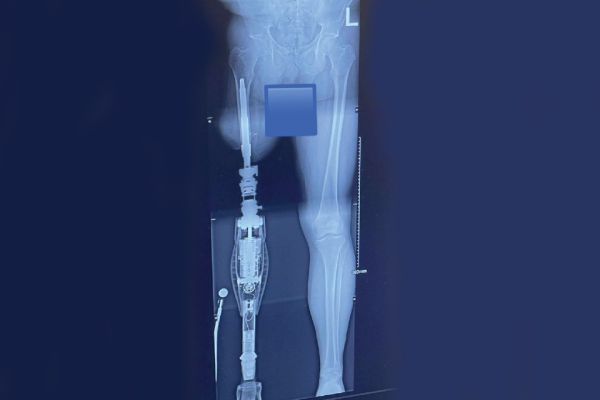
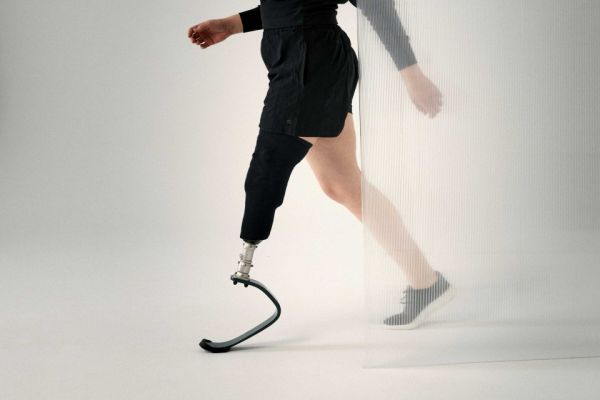
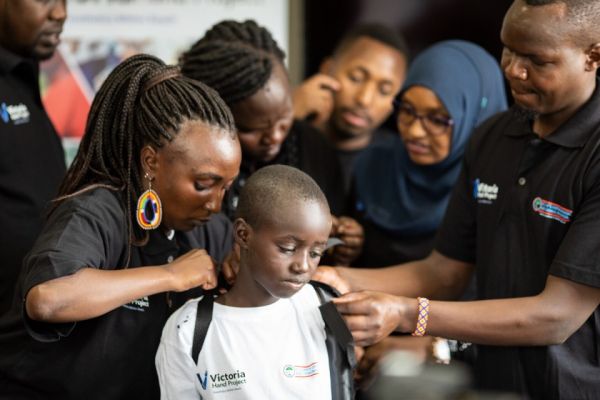
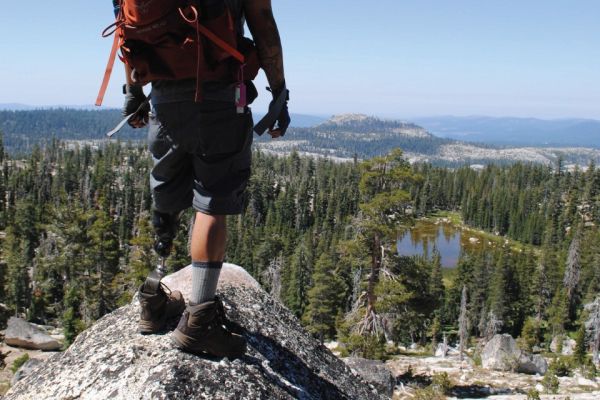

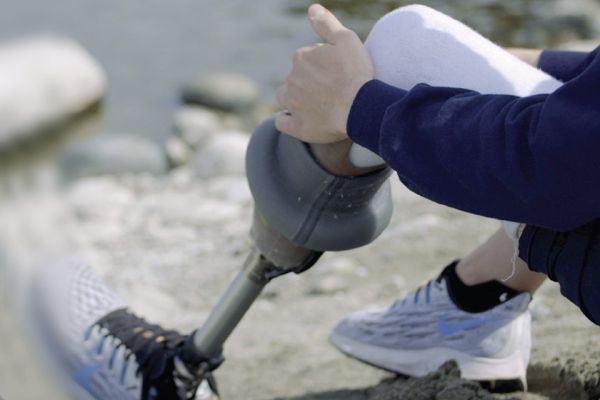

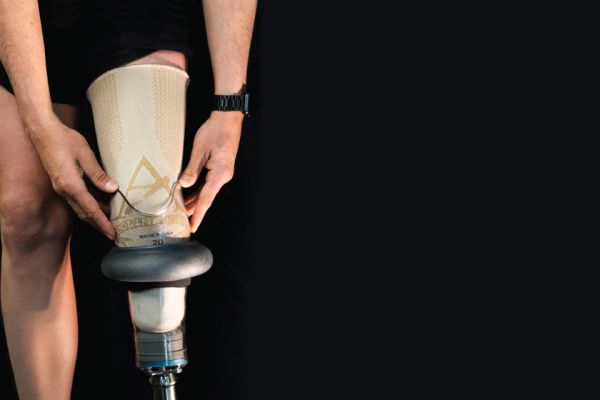

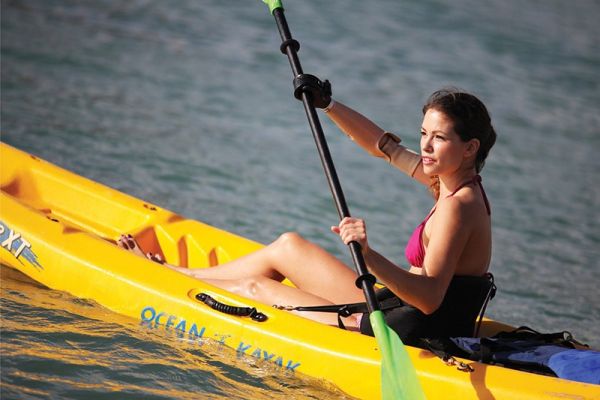
 How to resolve AdBlock issue?
How to resolve AdBlock issue?